
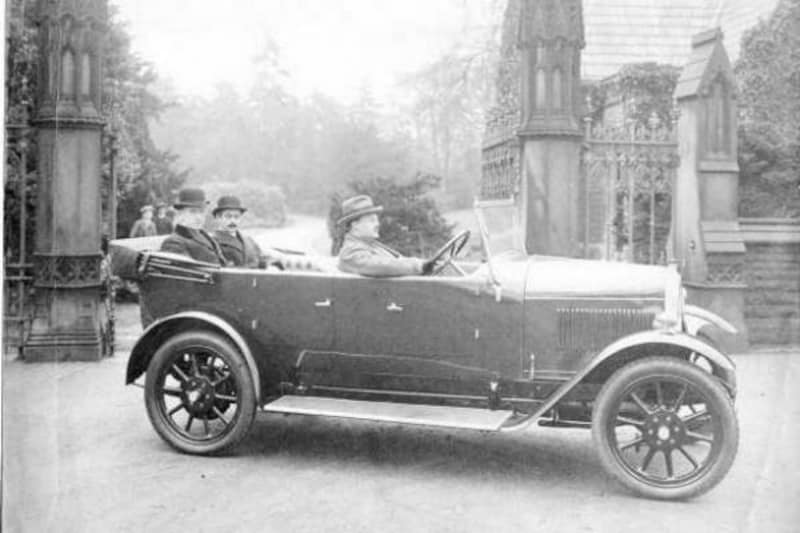
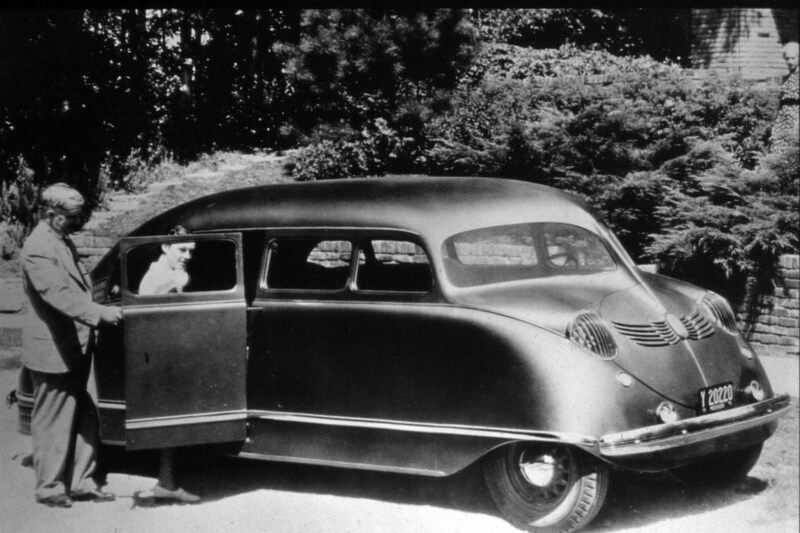
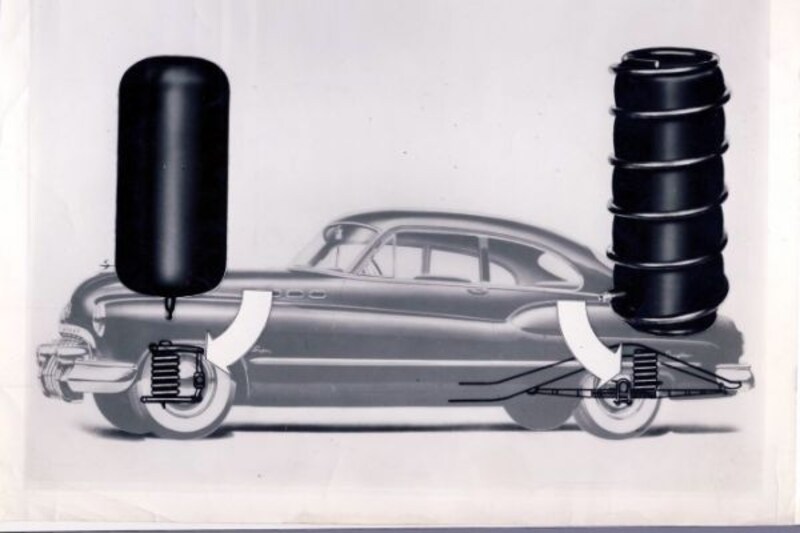



With advancing technical insight, we have become better able to control complex systems over the years. Nevertheless, a lot of modern technology has its roots in the past, including air suspension.
A little upper class limousine or SUV is now standard equipped with air suspension. It is still a fairly exclusive technique, which means that occupants hardly notice that they are driving over bumps. Nevertheless, it is not a recent thing. As early as 1901, the American William W. Humphreys patented a pneumatic suspension system for vehicles (initially only carriages) that involved absolutely no control technology – let alone electronics. Humphreys uses closed hoses at both ends as air bellows. It mounts it between the chassis beams and the underside of the superstructure. It is not more than that.

Cowey
It doesn’t get more serious until the end of the decade. In 1909, the English car manufacturer Crossley Brothers from Manchester offered as an option air suspension from the Cowey Engineering Company. In those days Cowey is a serious parts manufacturer and supplies complete engines in addition to small equipment such as speed and fuel gauges. The customer base includes Rolls-Royce. Cowey’s air suspension is self-regulating and works with a piston in a cylinder per wheel. The pressure on the top of the piston comes from a reservoir which in turn is forced full of air via a motor-driven pump. In addition to absorbing unevenness in the road surface, it can also compensate for variations in load. If you already have the parts at home, it is only a small step to build cars yourself: from 1911 to 1915 Cowey actually builds cars, all with air suspension. However, the system appears to be sensitive to leakage and is therefore not very reliable.
Inspiration for the DS
When the Frenchman George Messier started a car factory on the south side of Paris in 1920, he had already made a name for himself in pneumatics. It will therefore come as no surprise that he also equips his cars with air suspension. Messier screws the first systems on license-built cars from other manufacturers. Only from 1925 Messier builds cars under his own name. After about 150 copies, Automobiles Messiers stopped working in 1931 and the company focused entirely on landing gear for the aircraft industry. And with success. As part of the Safran group, Messier is today the world leader in landing gear. Incidentally, Messier’s air suspension has been the direct source of inspiration for the hydropneumatic suspension system of the Citroën DS.
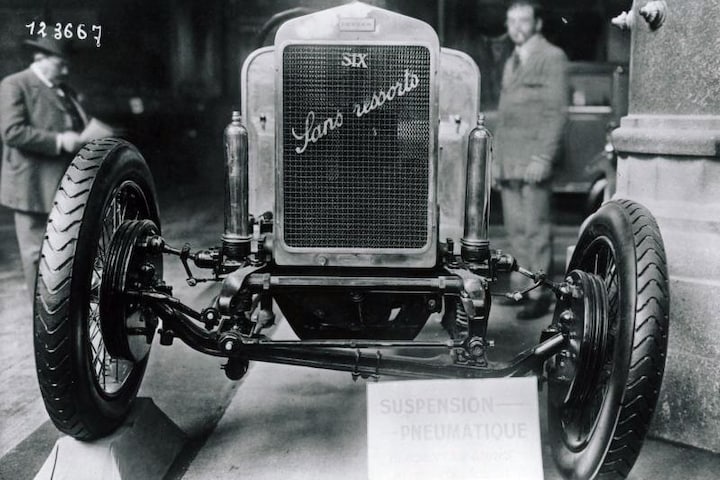
Messier
In 1933 Firestone takes over from Messier and experiments with air suspension in a Stout Scarab. And it will stay at that for a while. After the war, various aftermarket air springs were available as auxiliary springs in addition to (or actually in) existing coil springs. It was not until the late 1950s that air suspension was picked up by the major American car manufacturers, but often rejected again after one or two model years due to reliability problems. In Germany, the Borgward P100 is the first in 1960 and with the Mercedes-Benz 300 SEL from 1961, air suspension is here to stay.
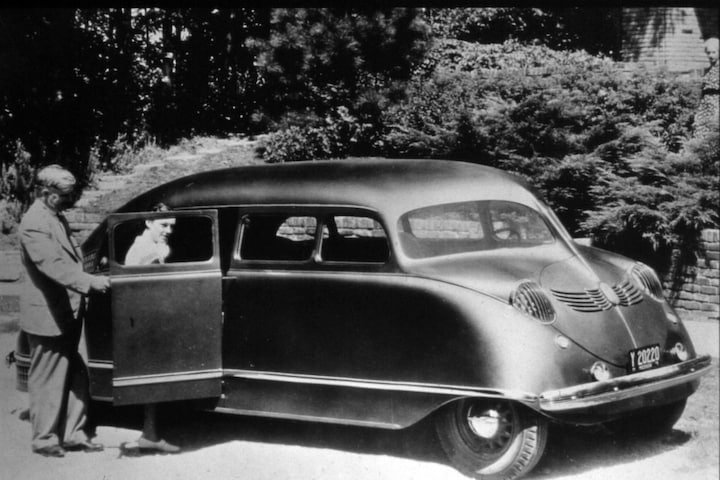
Stout Scarab
Based on the world’s first MPV, the Stout Scarab, Firestone developed an air suspension chassis in 1933.
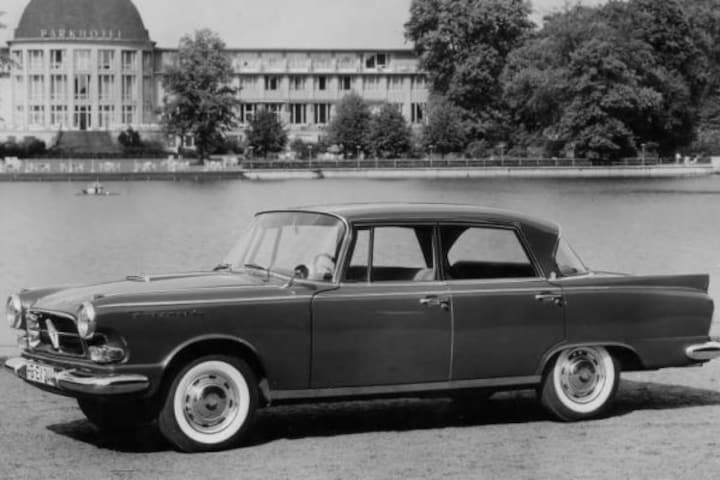
Borgward P100
Despite the great comfort of air suspension, Borgward was unable to survive with the P100.
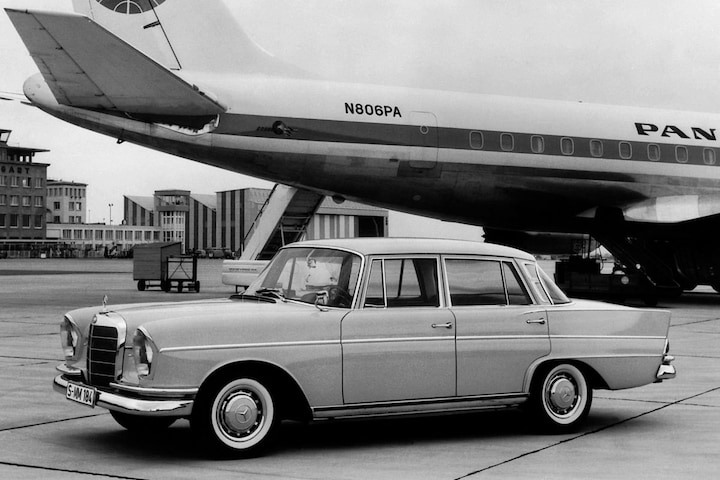
Mercedes-Benz W112
It wasn’t until Mercedes-Benz introduced the 300 S in 1961 that air suspension became a keeper.
This article previously appeared in 2014’s Techzle Classics issue 6.